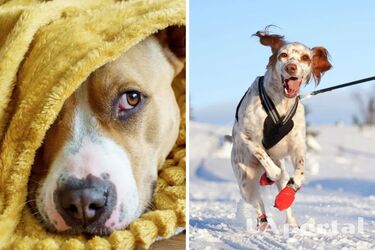5 tips to walk your dog safely in cold weather

In winter, dog owners need to take extra precautions when walking their dogs. After all, low temperatures, rock salt, and ice can harm your pet.
Mental Floss has suggested several methods to keep your dog warm in the cold. After all, some breeds need help keeping their bodies warm.
1. Buy your dog a winter jacket.
Pet accessories are usually designed to be adorable without a lot of practical features. A winter jacket or coat for your dog is an exception.
Short-haired puppies and small breeds are especially prone to feel uncomfortable in cold conditions. Choose a waterproof winter coat that covers the chest and belly. Brighter colors are better for visibility, especially if your dog has light fur. (If they go off-leash, they'll be easier for you and others to spot.)
2. Use boots or gel to protect their paws from snow, ice, and rock salt.
Your dog's paws can handle some pretty tough terrain, but prolonged exposure to snowy, icy surfaces will eventually prove uncomfortable. You can apply a wax or gel (petroleum jelly is fine) to protect their skin, but be sure to rinse it off when you're done.
Some pet owners opt for winter boots for dogs, which can help keep their paws dry and weather-resistant. If your dog doesn't want to wear booties, you can put them on and then switch their attention to food, treats, or going right out the door.
3. Choose the right leash for winter walks.
If your dog loves to walk you, make sure you have a leash that will allow you to better control the unpredictable winter surface. A harness takes the strain off your dog's neck and makes it easier for you to navigate. Avoid retractable leashes as they are more difficult to control. If you tend to walk in very dangerous places, choose a runner's leash that wraps around your waist.
4. Do a check after your walk.
If you decide to let your dog walk barefoot, be sure to wash off the salt or de-icer when you get home. Also, wipe their belly as it can also come into contact with defrosting products. These compounds are irritating to their paws and toxic if ingested.
5. Watch for signs that your dog is uncomfortable.
Dogs tend to shiver when they want to go home or leave their paws up when the cold gets too much. Some breeds may also be more tolerant of cold temperatures than others. If you notice any of these signs, it's best to end your walk and let your pet warm up at home.
If you want to get the latest news about the war and events in Ukraine, subscribe to our Telegram channel!
